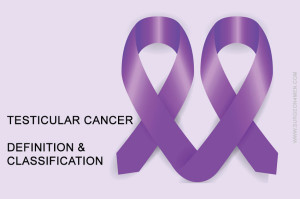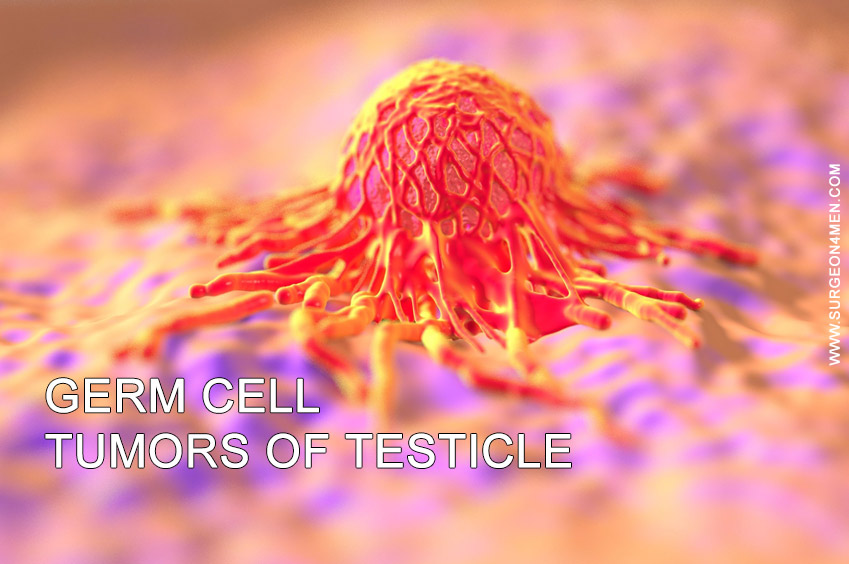Germ Cell Tumors of Testicle
Male urinary system is complex as it also serve conduit to the passage of sperms and genital secretions that are produced and stored in the male glands. These glands are located in the close vicinity of the male urinary system and also serve other vital functions such as secretion of male hormones like testosterone etc.
The testicles are the primary male gonads or glands that are egg-shaped are enclosed in a sac that is largely made up of loose skin (also referred to as the scrotum). The histological and anatomical structure of testicles is simple and is comprised of:
- Specialized cells that are involved in the production or secretion of the primary male hormone – the testosterone.
- Germ cells are also highly specialized cells that are responsible for the production of sperms.
As the name suggests, malignant transformation of testicular cells is referred to as the Testicular cancer. Fortunately, this cancer is rather rare. According to latest statistics, each year more than 8,500 new cases of testicular cancer are diagnosed in the United States each year. Additionally, testicular cancer comprises of 1% of all reported cases of cancers in male. The peak age of incidence is in young males in the age range of 15-35 years.
What are the Types of Testicular Cancer?
Almost 90-95% of all the testicular cancers are reportedly germ cell tumors; originating from the germs cells of testes that are mainly responsible for the production of sperms as discussed previously (3). Majority of the germ cell tumors within the body originates from the testicles, but it is imperative to keep in mind that this histological variety of tumors may originate from other sites within the body as well; such as chest, abdomen etc. The testicular germ cell tumors can be classified as:
 Seminoma tumors: Almost half of the germ cell tumors are seminoma in nature and are characterized by slow growth. Seminomas if detected at an early stage have a high success rate and good prognosis as these tumors don’t usually spread or metastasize to the other tissues of the body.
Seminoma tumors: Almost half of the germ cell tumors are seminoma in nature and are characterized by slow growth. Seminomas if detected at an early stage have a high success rate and good prognosis as these tumors don’t usually spread or metastasize to the other tissues of the body.- Non-seminoma tumors: These tumors are aggressive in nature and usually spread or metastasize to the other parts of the body.
Almost 5% of testicular cancers develop in stromal cells (3). These cells are responsible for producing the male hormone, testosterone. These tumors are not usually cancerous. A testicular tumor may as well be a secondary type of cancer i.e. the cancer that develops in other parts of the body spreads or metastasizes to testicles. To quote an example, lymphoma develops in the lymph nodes and spreads to the testicles or other parts of the body.
Risk Factors That May Aggravate the Risk of Germ Cell Tumors of Testicles
There are no known associations or correlations between lifestyle choices and risk of developing testicular cancer. Nevertheless following risk factors may put you at a higher risk of developing testicular cancer:
- Undescended testicle: also known as cryptorchidism. In a normal fetus, the testicles descend into the scrotum from the site of initial development (i.e. abdomen) during intrauterine life. However, in a small number of males, testes remain undescended even after childbirth. Males who are born with cryptorchidism have greater chances of developing testicular cancer regardless the fact that they have undergone any surgery to allow testicular descent.
- A positive history of testicular cancer: A personal or positive family history of testicular cancer can also aggravate the risk of malignancy of testes in males.
Symptoms of Germ Cell Tumors of Testicles
Testicular cancer usually presents with classic symptoms of swelling or pain in the testicles with or without a visible/ palpable hard lump. Any lump or swelling in the testicles require thorough physical examination. Other common signs and symptoms that are associated with germ cell testicular cancer are:
 In advanced stages of testicular cancer, back pain is a common complaint as a result of lymph nodes enlargement and metastasis to back tissues.
In advanced stages of testicular cancer, back pain is a common complaint as a result of lymph nodes enlargement and metastasis to back tissues.- Most patients also report tenderness or pain in the chest region.
- Testicular germ cell tumors are associated with high serum levels of human chorionic gonadotropin (hCG)
- Ache in the groin or the lower abdomen due to nodal metastasis or enlargement.
- The scrotum feels heavier
- In some cases, one or more painful lumps are found in the scrotum or associated regions.
Testicular cancer cannot be diagnosed alone on the basis of these symptoms. However if diagnosed at an early stage, the chances of curative treatment are fairly high.
In most cases surgical resection is the main-stay of therapy; however, depending upon the tumor character tics and spread; radiotherapy or chemotherapy can also be employed. It is highly recommended to take immediate action if you develop testicular lump or swelling in order to minimize the risk of deleterious complications.
References:
- Ghazarian, A. A., Trabert, B., Devesa, S. S., & McGlynn, K. A. (2015). Recent trends in the incidence of testicular germ cell tumors in the United States. Andrology, 3(1), 13-18.
- Nastały, P., Ruf, C., Becker, P., Bednarz-Knoll, N., Stoupiec, M., Kavsur, R., … & Pantel, K. (2014). Circulating tumor cells in patients with testicular germ cell tumors. Clinical Cancer Research, 20(14), 3830-3841.
- Bahrami, A., Ro, J. Y., & Ayala, A. G. (2007). An overview of testicular germ cell tumors. Archives of Pathology and Laboratory Medicine, 131(8), 1267.

